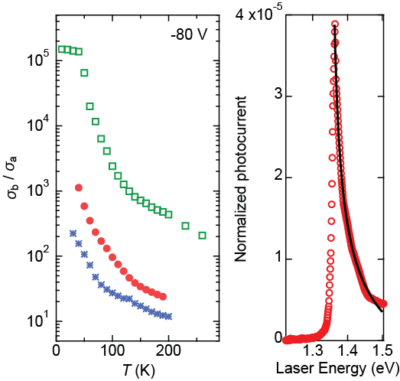Quasi 1D Electronic Transport in a 2D Magnetic Semiconductor

We investigate electronic transport through exfoliated multilayers of CrSBr, a 2D semiconductor that is attracting attention because of its magnetic properties. We find an extremely pronounced anisotropy that manifests itself in qualitative and quantitative differences of all quantities measured along the in-plane a and b crystallographic directions. In particular, we observe a qualitatively different dependence of the conductivities σa and σb on temperature and gate voltage, accompanied by orders of magnitude differences in their values (σb/σa ≈ 3 · 102 − 105 at low temperature and large negative gate voltage). We also find a different behavior of the longitudinal magnetoresistance in the two directions, and the complete absence of the Hall effect in transverse resistance measurements. These observations appear not to be compatible with a description in terms of conventional band transport of a 2D doped semiconductor. The observed phenomenology –together with unambiguous signatures of a 1D van Hove singularity that we detect in energy resolved photocurrent measurements– indicate that electronic transport through CrSBr multilayers is better interpreted by considering the system as formed by weakly and incoherently coupled 1D wires, than by conventional 2D band transport. We conclude that CrSBr is the first 2D semiconductor to show distinctly quasi 1D electronic transport properties.
Fan Wu, Ignacio Gutiérrez-Lezama, Sara A. López-Paz, Marco Gibertini, Kenji Watanabe, Takashi Taniguchi, Fabian O. von Rohr, Nicolas Ubrig and Alberto F. Morpurgo
Advanced Materials (2022)